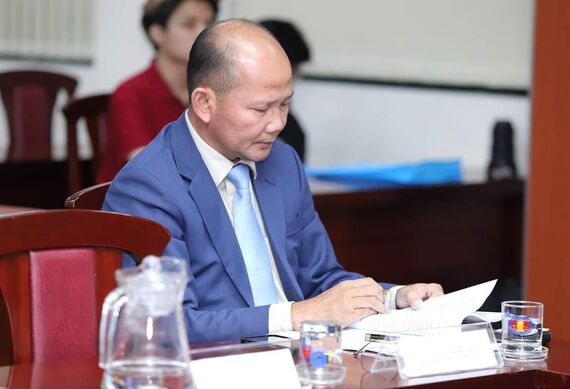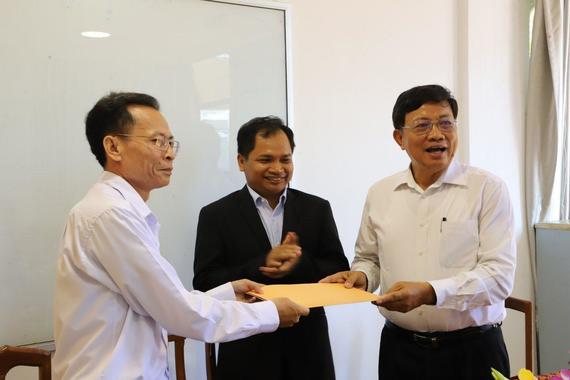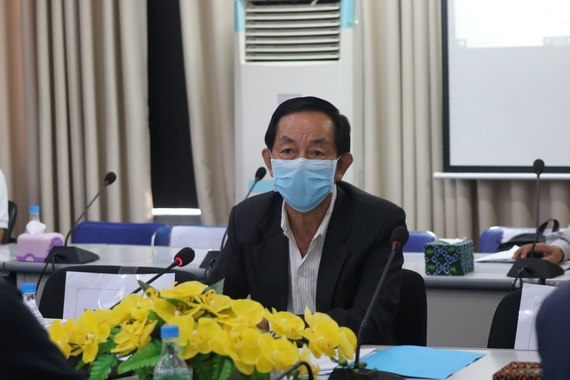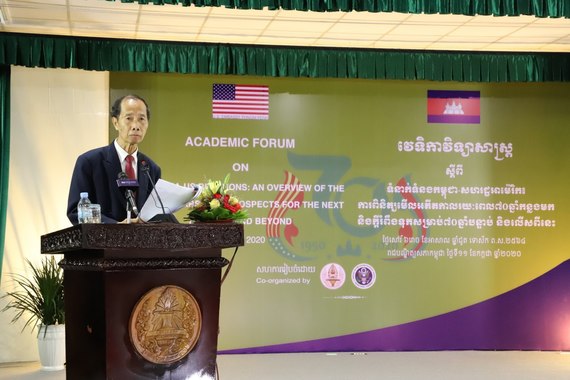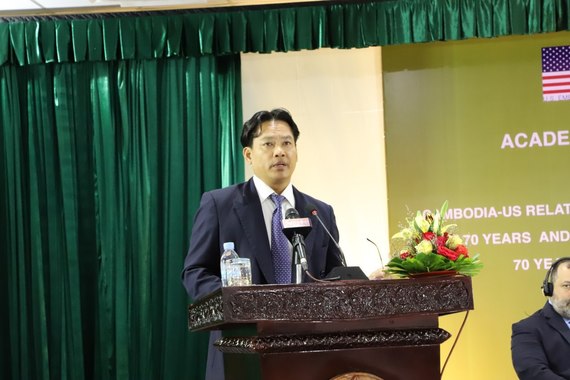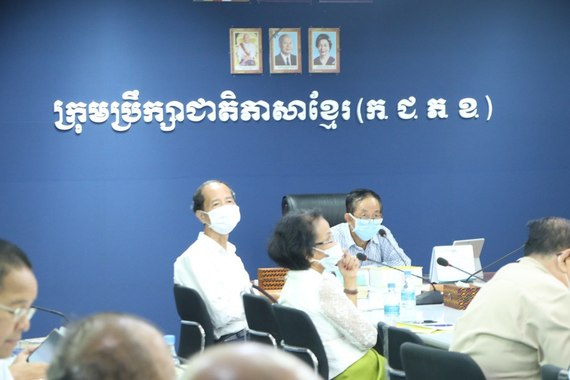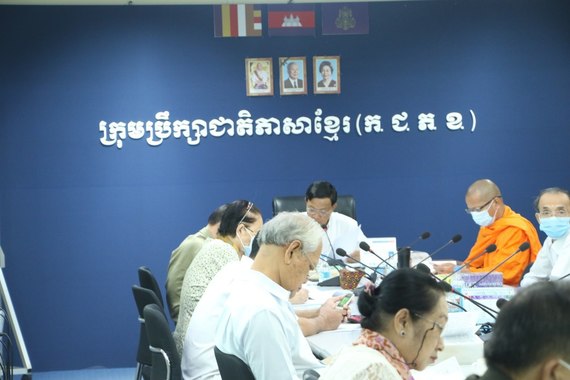Cambodia and China have expanded strategic cooperation and upgraded relations to a “diamond cooperation framework” in six priority areas: political cooperation, production capacity and quality, agriculture, energy, security, and people-to people exchanges. Meanwhile, In Washington, closer ties with Southeast Asian countries are seen as crucial in counterbalancing Beijing’s growing footprint in the region. After 10 years of the U.S.-Vietnam Comprehensive Partnership, Vietnam has a booming economy and the Biden administration has expanded its leverage over the Vietnam’s strategic location between China, ASEAN and the South China Sea.
China’s rising geopolitical influence has spurred the United States to relaunch great power competition for control over international order. Currently, China is the second largest economy in the world and will surpass the US by 2030. China’s economic, technological, and military power has also unsettled US allies. China’s assertive posture in the South and East China Seas and its integration of Eurasia via the Belt and Road Initiative (BRI) have confirmed US fears. Significantly, by PPP measure China’s economy surpassed the US in 2014 and will become the largest world’s economy in GDP by 2030.
China’s growth in technology, innovation, and high-tech manufacturing over the last two decades has been spectacular. Xi Jinping’s assertion that “time and situation” favor China is a clear indication of its shift from Deng’s strategy of “lie low and bide your time” to a more assertive strategy of China claiming its rightful place. His clear articulation of timelines for the realization of the ‘Chinese Dream’ is significant. By 2049, China aims to achieve the number one world power status with a world-class military.
China’s assertiveness in the South China Sea could lead to conflicts with smaller powers and seek to dilute the power and influence of the US through asymmetric strategies. On the other hand, the US has revived its alliance strategies to combine with India, Japan, and Australia to create the Quad strategy to blunt China’s increasing influence in the Indo-Pacific.
The US has continued to warn of potential economic risks posed by BRI, focusing on “debt-trap” narratives to increase anxiety in small states. While, the Biden Administration, G-7 and EU have announced their intention to compete with the BRI infrastructure strategy, the Build Back better and Global gateway initiatives have failed to materialise. As their domestic infrastructure dilapidates, neither the US or EU possess sufficient surplus capital to fund international infrastructure development. US and EU announcements have served only to confirm the disconnect between strategy and capacity to counter China.
With the increase in its economic and military power, China has taken an increasingly assertive position for reforms in multilateral institutions to augment the representation and voice of developing countries. China has also played a leading role in creating alternative development finance institutions such as the AIIB and BRICS New Development Bank (NDB). These are seen as efforts to reduce the influence of US-dominated IMF and World Bank. China is also emphatic that multi-polar world order is an absolute necessity and is focused on reducing American power and influence in global governance. Xi Jinping declared that China needs to lead “the reform of the global governance system with fairness and justice”.
The US has followed a strategy of forward-deployment to maintain the global architecture it has helped create post-1945. With nearly 800 overseas bases across the world, it dominates the Asia-Pacific and Western Eurasia. With a string of significant bases in the Middle East and the Gulf countries and Diego Garcia in the Indian ocean, the US dominates the Indian Ocean to project influence into Eastern Africa, the southern side of Asia, and the southern side of Eurasia. What is less publicised is that the US has nearly 400 bases surrounding China in a dangerously aggressive containment strategy. The 2019 revival of the Quadrilateral Security Dialogue (QUAD) among the US, India, Japan, and Australia is clearly focused on containing China.
However, the successful conclusion of the ASEAN-led Regional Comprehensive Economic Partnership (RCEP) in November 2020, which includes US allies Japan and Australia, is testimony to the trade dynamism between ASEAN and China, which are each others largest trade partners. The essence of this strategic competition is focused on the US’s attempts to decouple from China to deny it easy access to critical technologies and markets. On the other hand, through the BRI, China is working to extend influence across Eurasia and the Asia-Pacific and foster a new global economic order.
Cambodia-China’s enhanced co-operation and friendship culminated in the establishment of “Cambodia-China Comprehensive Strategic Partnership of Cooperation” on December 13, 2010. Until today, Cambodia and China relations reach to “Diamond” friendship and have taken root in the two countries, and from the Belt and Road Initiative (BRI) cooperation, free trade agreement (FTA), Regional Comprehensive Economic Partnership (RCEP) has yielded fruitful results, bringing huge benefits to the people. The two countries have joined hands to fight the pandemic, and the Chinese vaccines have effectively helped Cambodia to protect the people's lives and health, accelerate economic recovery and restore normalcy to social life. Cambodia hopes that the two sides will further advance the building of a Cambodia-China community with a shared future, foster greater synergy between development strategies, and strengthen cooperation in such fields as economy, trade, infrastructure, minerals, energy, agriculture and defense.
Cambodia is firmly committed to the “one-China principle and holds that Taiwan is an inalienable part of China's territory”. Cambodia resolutely opposes any words and deeds that infringe on China's sovereignty and territorial integrity, and will continue to firmly support China in safeguarding its core interests, and stand firm together with the over 1.4 billion Chinese people.
Cambodia-U.S. Relations
Unlike Cambodia-China relations, Cambodia’s domestic political issues are leveraged by the U.S. to gain greater influence over Cambodia. The U.S. has interfered in Cambodia’s internal affairs by providing support to the opposition and encouraging local and international civil society groups, as well as some media outlets, to frame a “negative” perception of Cambodia, which tarnishes the Kingdom’s image on the international stage.
US officials have voiced alarm for more than three years now over the China- backed refurbishment of Ream Naval Base, located outside Cambodia’s main port city of Sihanoukville. The United States also imposed the sanctions on senior officials of Cambodia, Chinese investors and companies in Cambodia over alleged systemic corruption, transnational organised crime and human rights abuses.
Vietnam-U.S. Relations
From mortal enemy to “strategic partnership.” The U.S.-Vietnam Comprehensive Partnership of the past decade has helped create booming economic growth. Vietnam’s strategic location between China, ASEAN and the South China Sea are fundamental to Washington’s efforts to leverage Southeast Asia in its counterbalancing strategy to arrest Beijing’s growing regional gravity.
U.S.-Vietnam relations have grown rapidly since diplomatic normalisation was achieved in 1995 - an expansion seen in the establishment of a “comprehensive partnership” in 2013, the transfer of two U.S. Coast Guard cutters to Hanoi in 2017, and port visits by U.S. aircraft carriers in 2018 and 2020.
Bilateral trade has grown two-hundredfold since normalisation, and annual U.S. investment in Vietnam has reached US$2.8 billion. “Vietnam enjoys a very high trade surplus with the U.S., totalling more than US$116 billion last year, and receives U.S. assistance in a wide range of domains, including defense and security, while managing to keep the rapprochement at a pace it is comfortable with”.
Vietnam-China Relations
Despite Vietnam’s complex ties with China, the "four No's" policy is both understood and appreciated: Vietnam advocates not joining a military alliance; non-alignment against another country; foreign countries are not allowed to set up military bases in Vietnam or use Vietnam's territory to fight against other countries; it rejects the use of force or the threat with force in international relations. These reflect Vietnam's political wisdom to a certain extent, the "four No's" have laid the foundation for the development of China-Vietnam relations toward the "four goods." In recent years, China and Vietnam have adhered to the policy of long-term stability, forward-thinking, good-neighborliness and comprehensive cooperation, and the spirit of being good neighbors, friends, comrades and partners. The bilateral friendship has reached a new stage of comprehensive strategic partnership and the recent meeting between the countries two leaders further consolidates China-Vietnam amity.
China and Vietnam are neighbors and share similar cultures. Both are have fast developing societies and economies. After the CPCs 20th National Congress, Chinese modernisation and construction initiatives will create more development opportunities and dividends for neighbouring countries including Vietnam.
Cambodia-Vietnam Relations
Cambodia and Vietnam share both a joint border of more than 1,270 kms and the all important Mekong River. Relations between the two countries are bound by historical, geographical, and political ties. The two nations established official diplomatic relations on June 24, 1967.
The bilateral relationship between Cambodia and Vietnam can be described as a love-hate relationship. The two nations have a long history of interaction, cooperation, and hostility as close neighbours and have been both friends and adversaries.
Based on historical, geographical, and political factors, strengthening relations and cooperation between the two countries is indispensable. Thus, the two countries continue to live together in peace, with mutual respect for sovereignty, independence, and territorial integrity, non-interference in each other’s internal affairs, resolve issues peacefully and cooperate in all areas of mutual benefit that befits their adopted motto of “good neighbourliness, traditional friendship, and comprehensive, sustainable and long-term cooperation”. The motto signifies the sincere wishes of both countries to continue to broaden and deepen all levels of cooperation and amity.
Conclusion
China-U.S. rivalry has meant that small and middle states like Cambodia and Vietnam were incapable to resist the impact of great power competition. To expand their regional influence, the great powers pressured the small states, either directly or indirectly, through their allies, organisations and institutions.
Both China and the U.S. have played important roles in promoting Cambodia and Vietnam development. Therefore, both countries seek beneficial paths to balance relations between the two superpowers while maximissing their political, economic and diplomatic initiatives by not give prominence to one power over another. Moreover, both Cambodia and Vietnam do not seek to overshadow other countries in the region or the world, but seek to maintain the balance of friendship, peace, security, stability, national sovereignty and development.
Despite very small and medium sized populations, Cambodia and Vietnam’s geographical location and regional role, particularly its membership in ASEAN, are strategically important to China and the U.S.. Thus, the foreign policy enshrined in Article 53 of the 1993 Constitution of Cambodia, is a policy of permanent neutrality and non-alignment and peaceful co-existence with its neighbours and all other countries around the world. The "four No's" policy of Vietnam and ASEAN Centrality not only bind Cambodia and Vietnam good relations, but ensure, within the context of geostrategic rivalry, that both countries can continue their growth and development with harmony and prosperity.

——-
RAC Media
